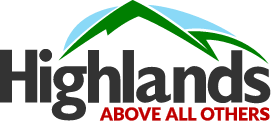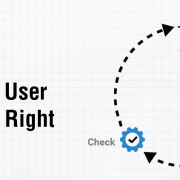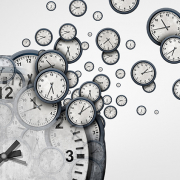Points of Light at the Heart of a Pandemic
Points of Light at the Heart of a Pandemic
Most would agree that the year 2020 has tested us as businesses, communities and as individuals in ways that few could have foreseen. Natural disaster, political turmoil and disease have always been a part of life, but the pandemic has delivered a real blow to the global community. There is no doubt about it: We will be struggling to regain some level of normalcy for months to come. Covid-19 has spared few countries; only nine months since the first cases of infection surfaced and already more than 1,000,000 people, world-wide, have succumbed. Economies have come to a virtual halt. People have lost work and income and suddenly find themselves in desperate situations. The lucky ones are able to work from home. What conclusions can we make about where we are now? The bleakness of the current situation colors our outlook and the difficulties are certainly easy to see, but is there anything positive to consider in all of this?
First, let’s think about the loss…
Loss of Partners, Friends and Family Members
Without a doubt, the passing of family, coworkers and others within our communities is the most tragic aspect of the pandemic. This virus has created death on a massive scale, the likes of which we are more likely to see during times of war. We lose people yearly to illness and many hundreds of thousands die from heart disease every year, but the numbers lost to Covid-19 exceed these numbers, even though we are well short of the 12-month mark.
Daily Life with Covid-19 Comes with Risk, The Magnitude of which is often Unknown
We have made significant strides as a civilization in the last 100 years. We know what is needed to sustain life and to protect human health. Science and technology have developed medicines and vaccines to treat countless medical conditions and to protect against more than a few horrific diseases. We know how to purify water, forecast extreme storm systems, and build the bridges, buildings and other infrastructure that support our modern way of life. But Covid-19 has forced a “reset” on what we thought we knew. It has shaken confidence in our ability to handle a global health crisis. We know now, without a doubt, that we are still vulnerable. Although the scientific community has made inroads, what we don’t know still dwarfs what we do. Navigating daily life in the last nine months has been an exercise in moving through uncharted territory. If I enter a public space, what will be my level of exposure? If I contract the virus, will my case be life-threatening or mild? These are the questions that haunt us—unanswered—from one day to the next.
Basic Social Interactions…Upended
The pandemic has forced us apart physically and we keep our distance—even, in some cases, from members of our own families. To avoid the spread of the virus we check all impulse to communicate via friendly physical gestures. Forget about the fist-bump or the friendly handshake. I can’t share tomatoes without taking precautionary steps to disinfect and sterilize my hands. It’s harder to communicate; I can’t read body language over Zoom. In person communication means I need to get better at reading other physical cues, like eyes for examples, which has never been a particular strength of mine.
But there is a silver lining to all of this, and it starts with what we have learned about ourselves.
We are Asked to Test our Resourcefulness and our Willingness to Sacrifice
Let’s not neglect the positives of this situation, because they are there, hiding in the midst of this crisis. As we reexamine how we go about our daily lives, our world view is bound to change. Forced to alter our daily habits and to forego social outings and other perks we want, many of us have reconsidered our place in the world. Maybe we’ve thought about the vulnerability of people in poorer communities or the front-line workers, or how lucky we are relative to the situation of so many others who have less resources to protect themselves. In some cases, we’ve accepted the risk and elected to help the weaker members of our communities to simply survive.
We have had to alter our expectations, make adjustments and make more than a few sacrifices over the last nine months. This kind of self-reflection and self-denial can only be good for personal growth and for our evolution as a tightly interconnected world community.
We Charter New Ground with Our Company
Not only have we been forced to be more thoughtful and resourceful as individuals, but as a company as well. Within a matter of days, and before the city of Noida officially went into lockdown, Highlands elected to move all employees out of the office. Staff rallied, organized, and set up all employees at home with computers, desks, chairs, printers and everything else needed to make work happen at a distance. Aside from a few minor delays, the well-oiled machinery that is Highlands at the Graphix Tower in Noida’s Sector 62 shifted into high gear, albeit remotely. Programmers collaborated and scrummed at a distance; sales representatives contacted clients and HR still looked after the interests of our highly valued employees. We made it work.
Yes, we as individuals and as a business are resilient. In the midst of a pandemic, we’ve managed to find a few “points of light.”









